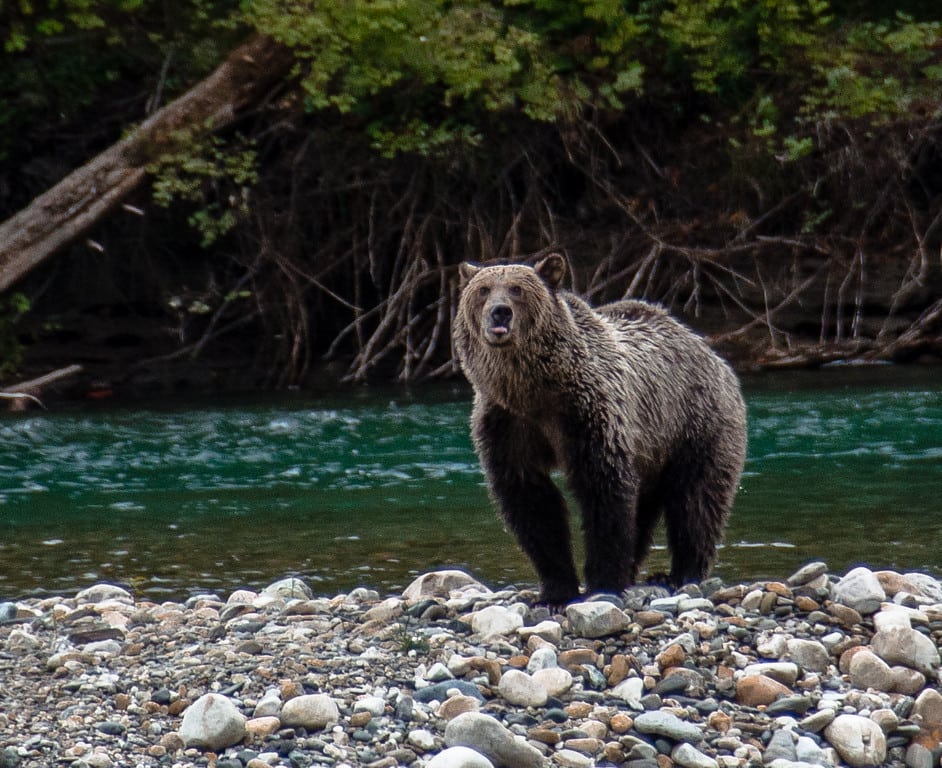
Grizzly Bears in BC

The myth: Hunting only accounts for a small percentage of human-caused grizzly bear mortality.
The science says: From 2004 to 2009, the total human-caused mortality for grizzly bears in BC was 2,138 (including hunting, animal control, illegal kills, and vehicle & railway collisions). Over the same period, resident and non-resident hunters combined killed on average 297 bears per year (Ministry of Environment 2010). An average of 69% of all bear mortalities in 2004-2009 was caused by hunting. Since 1976 an average of 340 bears were killed in BC each year from human causes. Hunters were responsible for on average 87% of those killed [297] (Environmental Reporting BC 2012).
The myth: One of the biggest threats to grizzly survival and human safety is the habituation of bears by humans.
The science says: It is important to make the distinction between habituated bears and food-conditioned bears. Habituated bears show increased tolerance towards people; they view people as neutral stimuli, receiving no positive (food) or negative (harm/harassment) effects from being in relatively close proximity to people. There is no evidence to suggest that habituated bears come into conflict with people more often than non-habituated bears. Alternatively, food-conditioned bears associate people with a positive reward (food) and are potentially dangerous bears.
The myth: Hunting is an effective tool to help manage the bear population.
The science says: A recent study (Artelle et al. 2016) showed that hunting bears had no measurable effect on conflict patterns, suggesting that hunting is a poor management tool for reducing human-bear conflicts. Additionally, recent polls suggest that more than 90 per cent of British Columbians oppose the grizzly bear hunt.
The myth: Hunting is necessary to gain better data and knowledge about bears.
The science says: Akin to Japanese whaling for ‘scientific research’, modern research practices do not require subjects to be killed for them to be studied. Non-invasive research techniques are now becoming one of the most common ways to study large mammals, and can provide data on movement patterns, reproduction, behaviour, population dynamics and also population estimates.
The myth: It is important to keep a fear of people in grizzly bears to keep them safe.
The science says: Bears which are more tolerant of people are less likely to behave aggressively if their personal space is violated (Smith et al., 2005). Habituated bears have a smaller personal space (or ‘overt reaction distance’ (Herrero et al. 2005) than non-habituated bears. However, both habituated, and non-habituated bears will behave defensively if they feel threatened.
The myth: Grizzly bears numbers are safe in BC.
The science says: The COSEWIC classification of ‘Special Concern’ is defined as “a wildlife species that may become threatened or endangered because of a combination of biological characteristics and identified threats” (COSEWIC 2015). Grizzly bears as a species were reclassified from ‘Not at Risk’ to ‘Special Concern’ in 2012, indicating an increased conservation concern since their original designation in 1979.
The myth: Hunting is a good tool to manage grizzly bears.
The science says: There is abundant literature from North America and Europe on the negative effects of hunting grizzly bears as a management tool. The hunting of adult male grizzly bears is suggested to negatively affect cub survival through increased infanticide and reduced reproduction (Wielgus & Bunnell 1994; Swenson et al. 2001, 2003). Additionally, there is no evidence to suggest that removing adult male grizzly bears from a population results in higher cub survival (McLellan 1994; Miller et al. 2003). Adult male bears, the target for trophy hunters, are extremely important individuals. Older and larger male bears, in particular, are selected by females for mating (Bellemain et al. 2006) and have higher reproductive success (Zedrosser et al. 2007). Removing these males may in time lead to smaller, younger and less genetically fit individuals dominating the breeding pool, compromising the viability of populations.
This is an edited version of a document that was compiled with the help of Dr. Melanie Clapham, postdoctoral research fellow at the University of Victoria.
